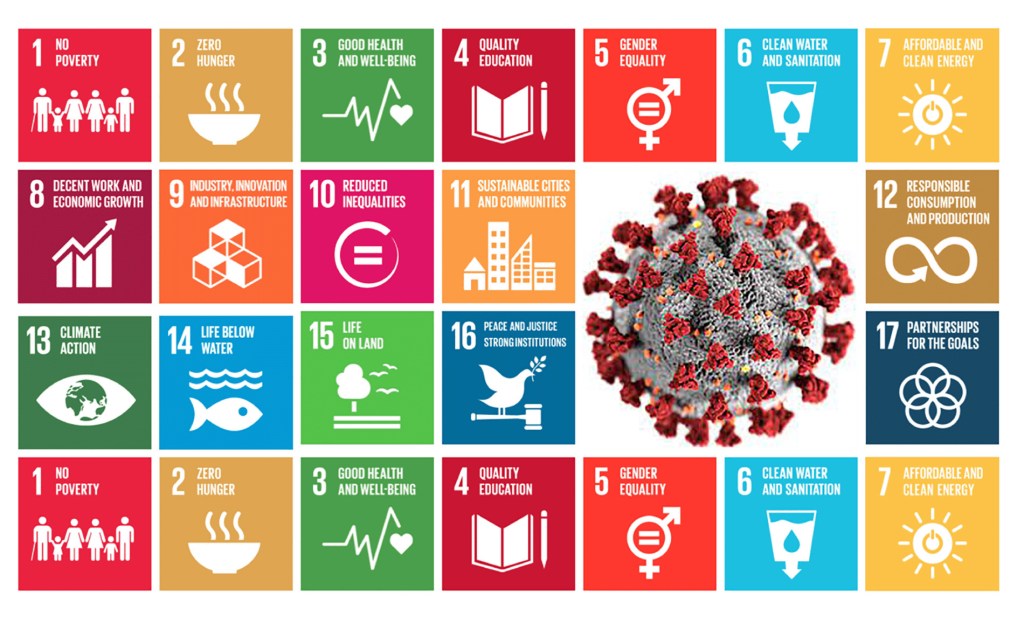Policy Updates: U.S. to provide financial support to Argentina, raising concerns among soybean farmers – Pro Farmer

Report on U.S. Financial Assistance to Argentina and its Implications for Sustainable Development Goals
1.0 Overview of International Partnership and Economic Support
The United States Treasury has announced a financial assistance package for Argentina, aimed at stabilizing the nation’s economy. This initiative, detailed by Treasury Secretary Scott Bessent, reflects a bilateral effort consistent with SDG 17: Partnerships for the Goals. The support follows high-level discussions between U.S. President Donald Trump and Argentine President Javier Milei during the United Nations General Assembly. The stated objective is to foster economic stability in Argentina, a key component of SDG 8: Decent Work and Economic Growth.
- Meeting Context: Discussions occurred in New York between President Trump, President Milei, and Secretary Bessent.
- Support Measures: The package includes direct loans to Argentina’s central bank and the purchase of government debt.
- Stated Goal: To provide transitional economic support, described as a “bridge to the election,” thereby promoting SDG 16: Peace, Justice and Strong Institutions by reinforcing Argentina’s financial stability.
2.0 Conflict with Domestic Agricultural Sector and Global Food Markets
The U.S. decision has generated significant concern among domestic soybean producers, highlighting a conflict between international policy and national economic interests. This tension directly impacts progress toward SDG 2: Zero Hunger, which involves ensuring sustainable food production systems and resilient agricultural practices, and SDG 10: Reduced Inequalities, by affecting the livelihoods of American farmers.
2.1 Key Concerns from U.S. Soybean Producers
- Market Competition: Argentina is a primary competitor in the global soybean market. U.S. financial support is perceived as strengthening a direct rival, potentially undermining the economic security of American agricultural communities.
- Argentine Export Policy: The Argentine government recently suspended a grain export tax, a move that increased its competitiveness and led to a surge in orders from China.
- Economic Impact: This policy shift contributed to a decline in global soybean prices, negatively affecting the profitability and sustainability of U.S. soybean farming operations. The American Soybean Association expressed profound disappointment with the U.S. government’s decision to aid a competitor.
3.0 Analysis of Competing SDG Priorities
This situation illustrates the complex interplay and potential conflicts between different Sustainable Development Goals. While the U.S. financial assistance to Argentina aligns with goals related to international partnership (SDG 17) and economic growth for a developing nation (SDG 8), it simultaneously creates challenges for domestic economic equality (SDG 10) and the stability of food production systems (SDG 2) within the United States. The policy underscores the difficulty in balancing international development objectives with the need to protect local livelihoods and ensure fair competition in global markets for responsible production and consumption (SDG 12).
Analysis of Sustainable Development Goals in the Article
-
Which SDGs are addressed or connected to the issues highlighted in the article?
The article touches upon several Sustainable Development Goals (SDGs) related to international economic relations, trade, and agricultural markets. The primary SDGs identified are:
-
SDG 2: Zero Hunger
This goal is relevant because the article’s central conflict revolves around soybeans, a major global agricultural commodity essential for food and animal feed. The discussion about “global soybean markets,” “grain export tax,” and competition between major exporters like the U.S. and Argentina directly relates to the stability and fairness of the world’s food systems.
-
SDG 8: Decent Work and Economic Growth
The article directly addresses this goal by focusing on the U.S. plan to provide “financial assistance to Argentina in an effort to stabilize its struggling economy.” This action is a clear attempt to foster economic growth in Argentina. Simultaneously, it highlights the economic concerns of “American soybean farmers,” whose livelihoods and economic stability are threatened by the policy and market shifts described.
-
SDG 10: Reduced Inequalities
This goal is connected through the theme of financial flows between countries. The U.S., a developed nation, is providing financial support to Argentina to address its economic struggles. This action can be viewed as an effort to reduce economic inequality between nations by supporting a country facing economic instability.
-
SDG 17: Partnerships for the Goals
This is a central theme of the article. The “meeting in New York” between the leaders of the U.S. and Argentina, and the subsequent “support package,” exemplify a bilateral partnership aimed at achieving a specific economic goal (stabilizing Argentina’s economy). The article discusses international finance and trade cooperation, which are core components of SDG 17.
-
-
What specific targets under those SDGs can be identified based on the article’s content?
Based on the article’s details, the following specific SDG targets can be identified:
-
Target 2.b (under SDG 2)
“Correct and prevent trade restrictions and distortions in world agricultural markets…” The article highlights a market distortion and a subsequent policy action. Argentina’s decision to suspend its “grain export tax” is a direct change to a trade policy that affects global agricultural markets. The U.S. financial support, while not directly a trade measure, influences the economic context in which these trade decisions are made.
-
Target 8.1 (under SDG 8)
“Sustain per capita economic growth in accordance with national circumstances…” The U.S. financial assistance is explicitly designed to “stabilize its struggling economy,” which is a fundamental prerequisite for achieving sustained economic growth in Argentina.
-
Target 10.b (under SDG 10)
“Encourage official development assistance and financial flows, including foreign direct investment, to States where the need is greatest…” The U.S. plan to provide “loans to Argentina’s central bank and purchases of government debt” is a direct example of the financial flows described in this target, aimed at a country with a “struggling economy.”
-
Target 17.3 (under SDG 17)
“Mobilize additional financial resources for developing countries from multiple sources.” The “financial assistance” and “support package” from the U.S. to Argentina is a clear instance of mobilizing financial resources from one country to support another, as called for in this target.
-
Target 17.10 (under SDG 17)
“Promote a universal, rules-based, open, non-discriminatory and equitable multilateral trading system…” The article implicitly touches on this target by describing actions that affect the global trading system. The competition in “global soybean markets,” Argentina’s unilateral suspension of an export tax, and the resulting “decline in U.S. soybean prices” all relate to the dynamics and equity of international trade.
-
-
Are there any indicators mentioned or implied in the article that can be used to measure progress towards the identified targets?
The article does not mention official SDG indicator codes, but it contains information that can be used as practical, measurable indicators for the identified targets:
-
Indicators for Target 2.b
The article implies several indicators: the status of agricultural export taxes (the “suspended… grain export tax”), the volume of international trade orders (the “wave of Chinese orders”), and global commodity prices (the “decline in U.S. soybean prices”). These are all measurable data points for assessing trade distortions.
-
Indicators for Target 8.1
While no specific figures are given, the stated goal to “stabilize its struggling economy” implies that key economic indicators such as GDP growth rate, inflation, and currency stability would be used to measure the success of the financial assistance.
-
Indicators for Targets 10.b and 17.3
The primary indicator is the total value of the financial flows. The article specifies the types of flows—”loans to Argentina’s central bank and purchases of government debt”—the total monetary value of this “financial assistance” would be the direct indicator.
-
Indicators for Target 17.10
Progress can be measured by tracking market share and trade flows. The article points to Argentina’s effort to “expand its position in global soybean markets,” which can be quantified as a percentage of the global market. Changes in market share and the impact on prices for other producers (“U.S. soybean prices”) are indicators of the trading system’s dynamics.
-
-
SDGs, Targets and Indicators Table
SDGs Targets Indicators SDG 2: Zero Hunger 2.b: Correct and prevent trade restrictions and distortions in world agricultural markets. Status of agricultural export policies (e.g., “suspended a grain export tax”); Volume of international trade (“wave of Chinese orders”); Global commodity prices (“decline in U.S. soybean prices”). SDG 8: Decent Work and Economic Growth 8.1: Sustain per capita economic growth in accordance with national circumstances. Measures of economic stability for Argentina’s “struggling economy” (implied, e.g., GDP growth, inflation rate). SDG 10: Reduced Inequalities 10.b: Encourage official development assistance and financial flows to States where the need is greatest. Total value of the “financial assistance” package, including “loans to Argentina’s central bank and purchases of government debt.” SDG 17: Partnerships for the Goals 17.3: Mobilize additional financial resources for developing countries from multiple sources. The total value of the U.S. “support package” provided to Argentina. SDG 17: Partnerships for the Goals 17.10: Promote a universal, rules-based, open, non-discriminatory and equitable multilateral trading system. Changes in market share in “global soybean markets”; Impact on commodity prices for competing nations.
Source: profarmer.com

What is Your Reaction?
 Like
0
Like
0
 Dislike
0
Dislike
0
 Love
0
Love
0
 Funny
0
Funny
0
 Angry
0
Angry
0
 Sad
0
Sad
0
 Wow
0
Wow
0








































































